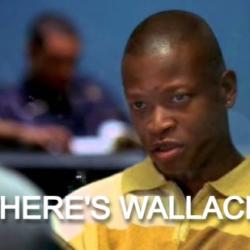• “Lawyer Takes James MacDonald and Harvest Bible Chapel to the Woodshed,” Warren Throckmorton reports on his too-hot-for-Patheos blog.
The story here involves the structure — or lack thereof — in independent, nondenominational churches. These are, among other things, nonprofit organizations with boards and budgets. Churches don’t like to refer to their board of directors in such secular terms, but calling them “elders” or “deacons” or “trustees” shouldn’t change the legal function those boards are supposed to serve. When those boards don’t perform that function, churches can collapse into spectacular corruption or incompetence leading to financial ruin.
When my dad was an attorney in Central Jersey in the ’80s, he at one point wound up representing the congregation of a local independent “Bible Chapel” church in a dispute that involved their former pastor barricading himself inside the church building. Dad managed to shame the factions of that church into settling out of court, convincing them that maybe this wasn’t the greatest witness to the beauty of the gospel.
I get that nonprofit corporate governance can seem dull or like a burdensome, secular distraction from the religious mission of a local congregation, but this stuff is important for theological reasons as well as legal ones. Everybody from Paul to Augustine to Niebuhr will tell you what will happen if you think that personal benevolence, virtue, and piety are sufficient to prevent a charismatic leader from abusing his otherwise unchecked power. It’s not just laws on nonprofit governance that require functioning boards of directors, it’s also every understanding of the doctrine of original sin.
• By the way, more than a year later, I still don’t know or understand why Dr. Throckmorton’s blog was rudely and mysteriously booted from here on Patheos.
That happened about two years after I wrote about my concern that “A Ted Cruz win could further Bartonize ‘mainstream’ white evangelicalism” and jeopardize the status of some evangelical writers I admire due to the “Perpetually unsettled identity of evangelicalism.”
From that latter 2016 post:
This is the problem with white evangelical identity: It’s contingent on partisan political calculations beyond its own control. What is or is not acceptable for the white evangelical mainstream changes based on the shifting winds of the current Republican enthusiasm or Fox News’ outrage of the week.
… We have no way of knowing what other positions or principles might soon be forbidden or required. Contraception? Vaccination? Fluoridation? No one can be sure.
Since then, President Brainworms has made Republican orthodoxy — and thus evangelical legitimacy — even more precariously contingent, pegging the meaning of “evangelical” to the erratic, capricious whims of an agenda-setting demagogue with a bad case of narcissistic personality disorder.
• The investigation of high-tech sign-stealing by the Houston Astros is a good excuse to tell this story, from my senior year of high school, when I was the third baseman for the Timothy Christian Tigers.
We were playing against Hackensack Christian, one of the other small private schools in our small conference. Their coach, Mr. Rose, coached all the boys teams — soccer, basketball, and baseball — so I’d gotten to know him pretty well from playing six games a year against Hackensack all through high school.
The other thing I knew pretty well after all those years were the signs Hackensack used for bunting and base-running.
So anyway, they’ve got a runner on first with nobody out and their number nine hitter at the plate. Coach Rose flashes through their signs, sliding his hand across his chest just after their brim-of-the-cap indicator, telling the kid to bunt. Our pitcher squares and I start charging the plate to field the bunt. I’m maybe 30 feet from home when the kid whiffs on a mighty full swing. That’s a scary thing to see from 30 feet away.
So I turned to Coach Rose, “Looks like somebody missed the sign.”
“He sure did,” he said. Then he yells up to his batter, “Darren, watch carefully.” This time he doesn’t flash through all the signs. He just gives their indicator and then a big, slow, exaggerated version of their bunt sign. The kid nods like he understands and steps back into the box. I start creeping in and this time I get almost all the way to the plate, earning an even closer close-up view of another whiff on another full swing.
I head back toward the bag, a little rattled. “This guy’s gonna kill me,” I said to Coach Rose.
“I’ve got this,” he tells me. He strides angrily about halfway to the plate and yells, “Darren. You’re bunting! I want you to bunt. Bunt the ball.” The kid nods again and Coach Rose gives me a that-oughta-do-it look as he walks back to the coaches box.
Their batter did, finally, get the message, bunting on the next pitch. We turned that into a 5-3-6 double play because, somehow, their runner on first missed all those signs too.












